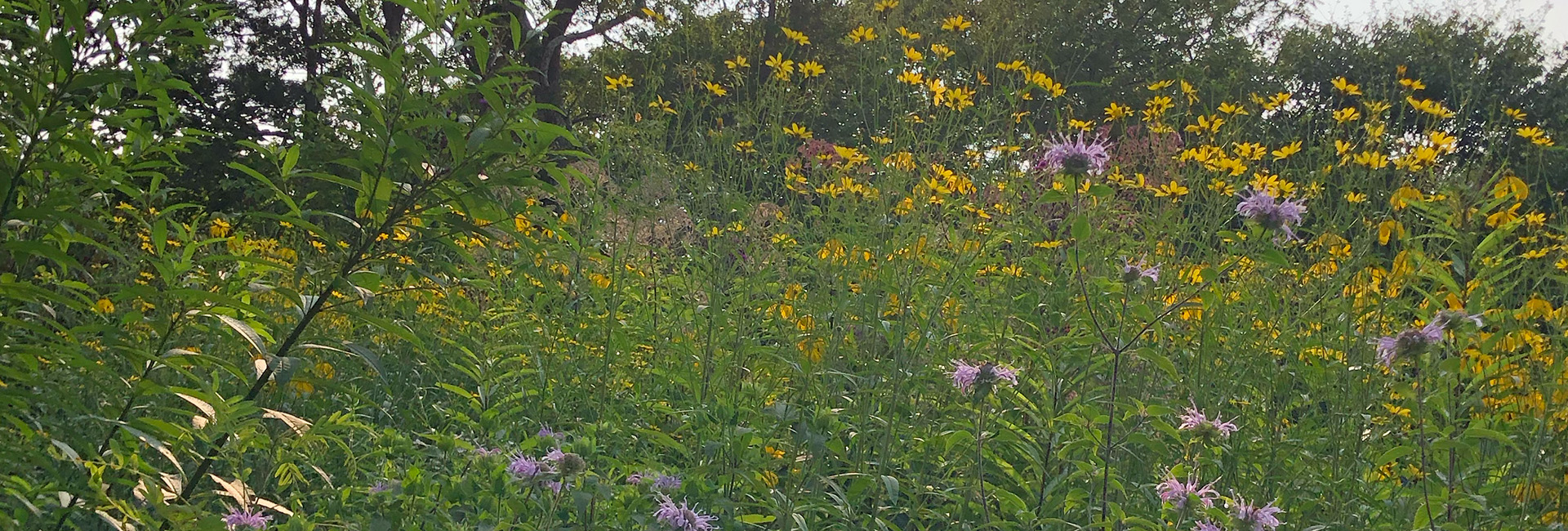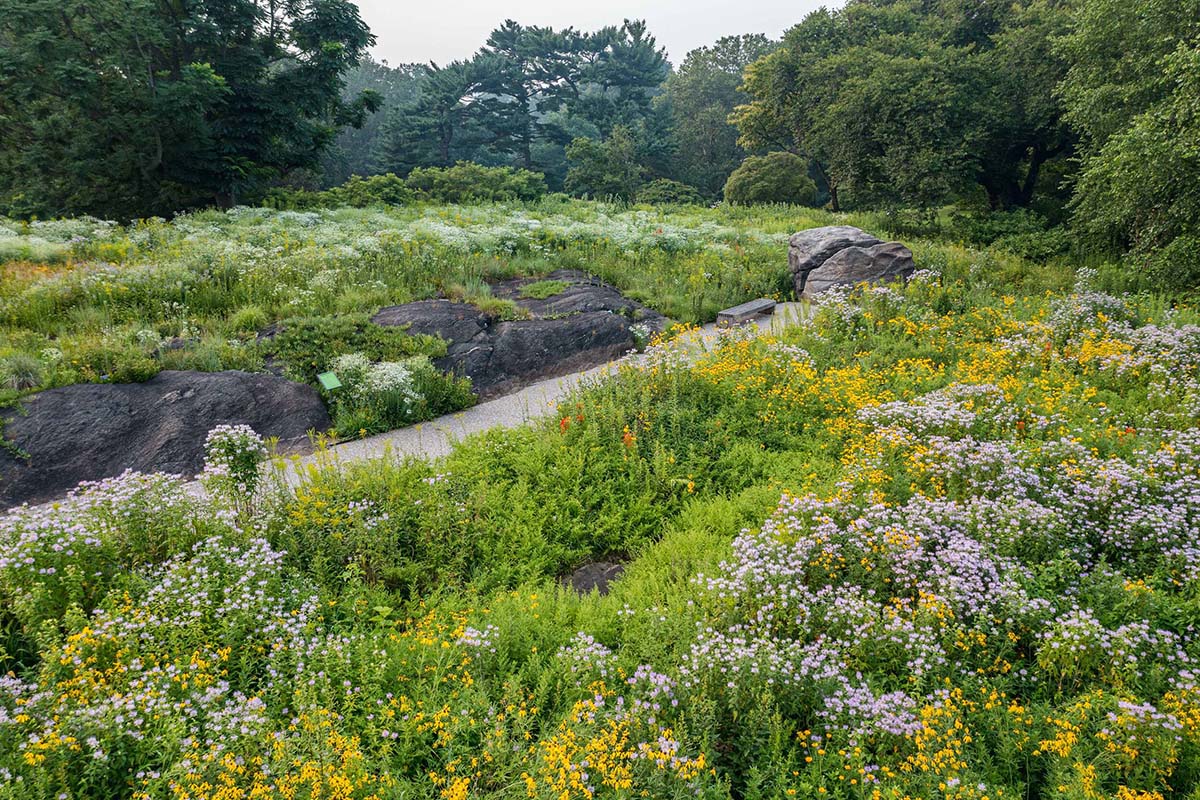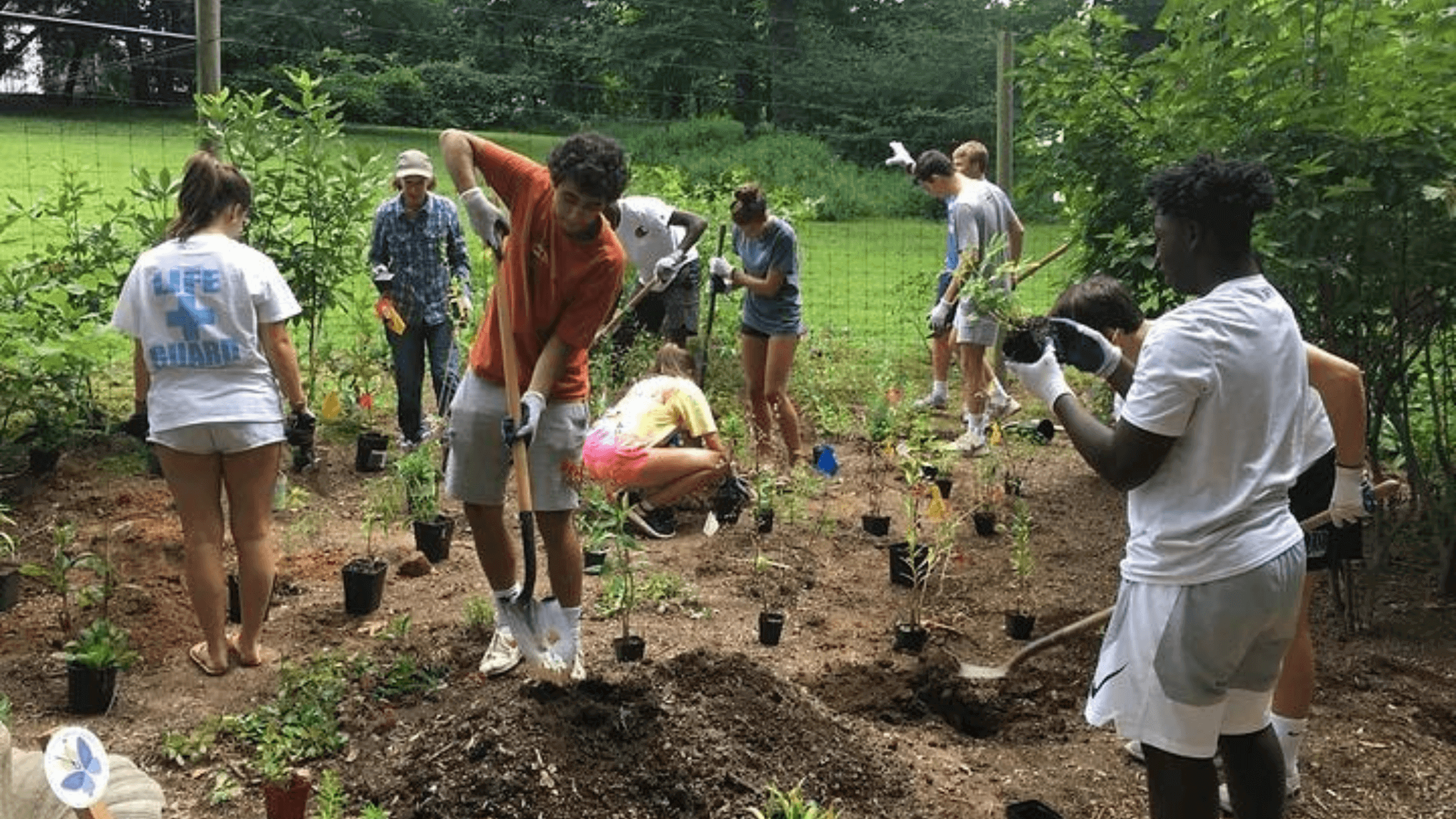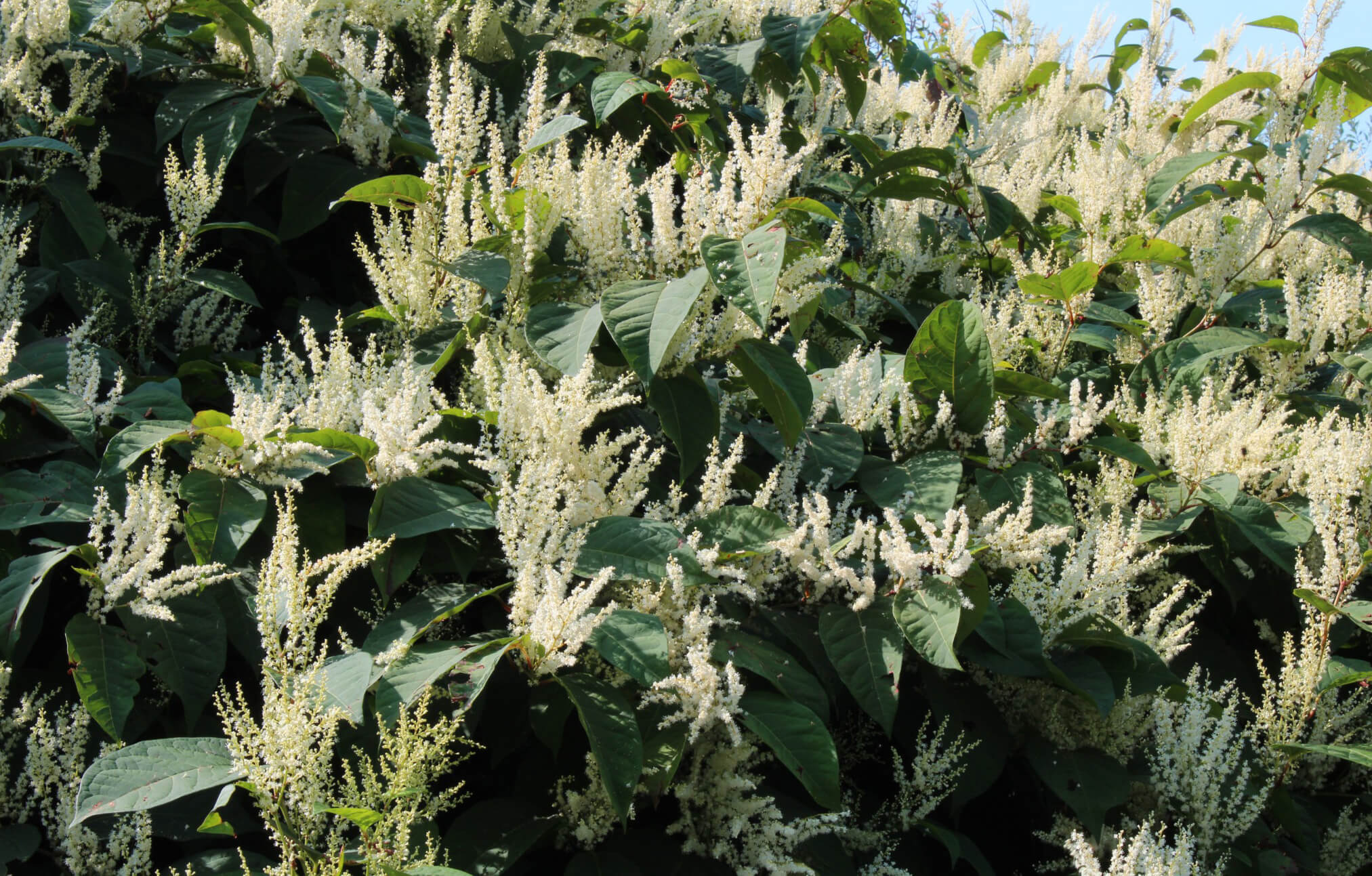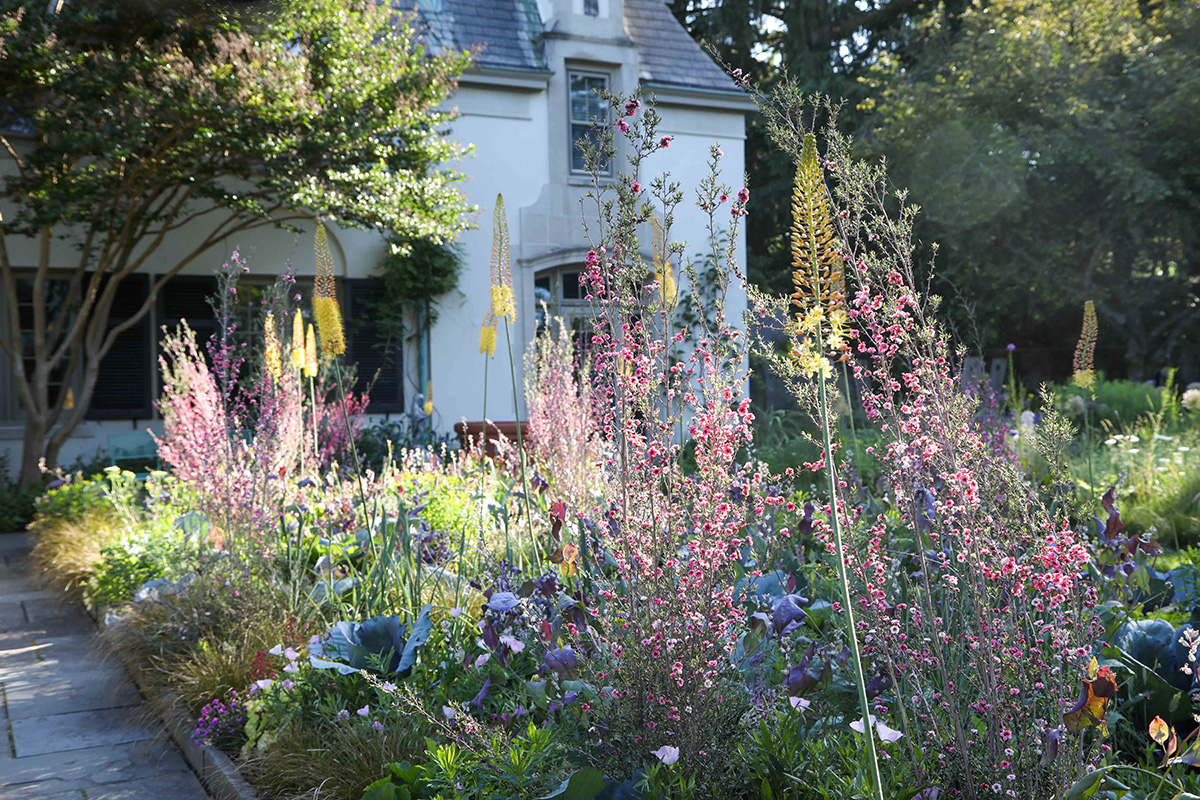
Wear Weirdness on your Sleeve: Making a Joyful, Personal, and Sustainable Garden
by Margo Rabb
On a recent Friday afternoon, I arrived at Chanticleer Garden feeling weighed down by a sense of bleakness about the world. Although I’d vowed to read the news for only ten minutes, even that left me with a heaviness I couldn’t shake. Two hours later, after hearing Chanticleer horticulturist (and former Perfect Earth employee) Tim Erdmann speak of how art and sustainability come together in the garden, I felt renewed and hopeful, as if I’d traveled to a beautifully strange alternate universe.
“Gardening is a form of activism,” Tim told me. “You’re never going to care about something or want to defend it unless you love it.” Tim is in charge of the Chanticleer House garden, which includes the areas around the mansion that once belonged to the Rosengarten family, who left the garden to be enjoyed by the public. Tim’s design has a surreal, innovative feel that made me see nature in new ways.
Tim creates vignettes on the house’s front porch by clustering pots and displaying sculptural, upturned birch branches in the corners. Photo by Lisa Roper, courtesy of Chanticleer Garden.
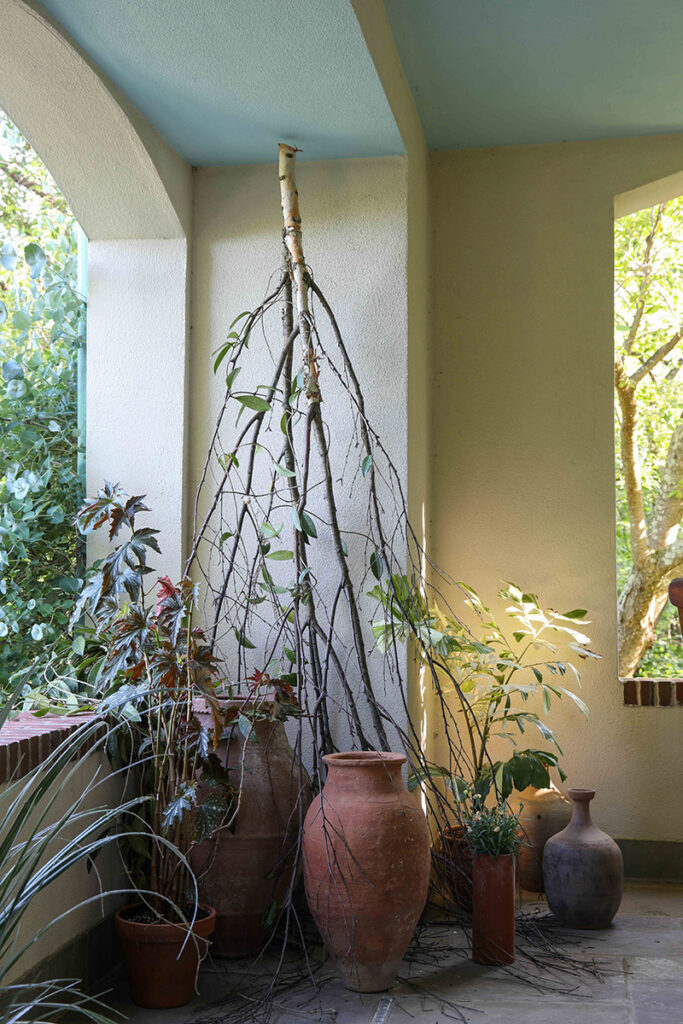
Upside-down birch branches fill the corners of the house’s open front porch, and upside-down pots balance on the fireplace mantle; natives and exotics are planted together in unique combinations, like unexpected friendships. Foxglove beardtongue (Penstemon digitalis) and tropical snowbush (Breynia disticha), wild blue phlox (Phlox divaricate) and bromeliads “play off each other and help the exotics seem native and the natives seem exotic,” Tim says. Native plants are also highlighted individually; Quaker ladies or bluets might seem less evocative in a landscape, but in their terra-cotta pot above the porch’s fireplace, their quiet beauty seems like an unknown opera singer belting out an aria at Carnegie Hall.
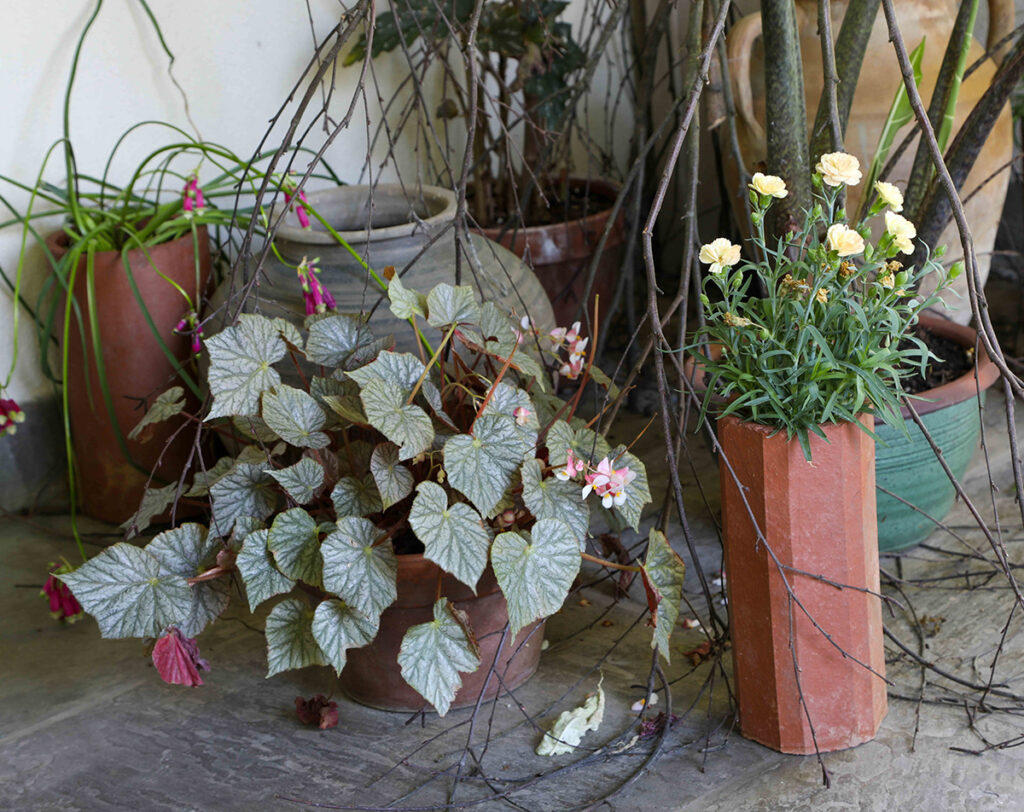
Pipe parts found in the basement of the house are repurposed as containers and planted here with dianthus. “Environmentalism is also not buying something when you don’t need to,” Tim says. Photo by Lisa Roper, courtesy of Chanticleer Garden.
The porch feels like a refuge for undervalued things. “Repurposing is one of the most environmental things you can do. It’s something that keeps everything personal,” Tim says. Old pieces of pipe that he found in the house’s basement become pots filled with dianthus; a squiggly grapevine loops around the fireplace mantle, like the flourish of a pen; old mid-ribs of a palm and dried hydrangeas in a container showcase the sculptural beauty of dead plants.
Spring-blooming native Quaker ladies bloom in small pots on the house’s porch. Photo by Margo Rabb.
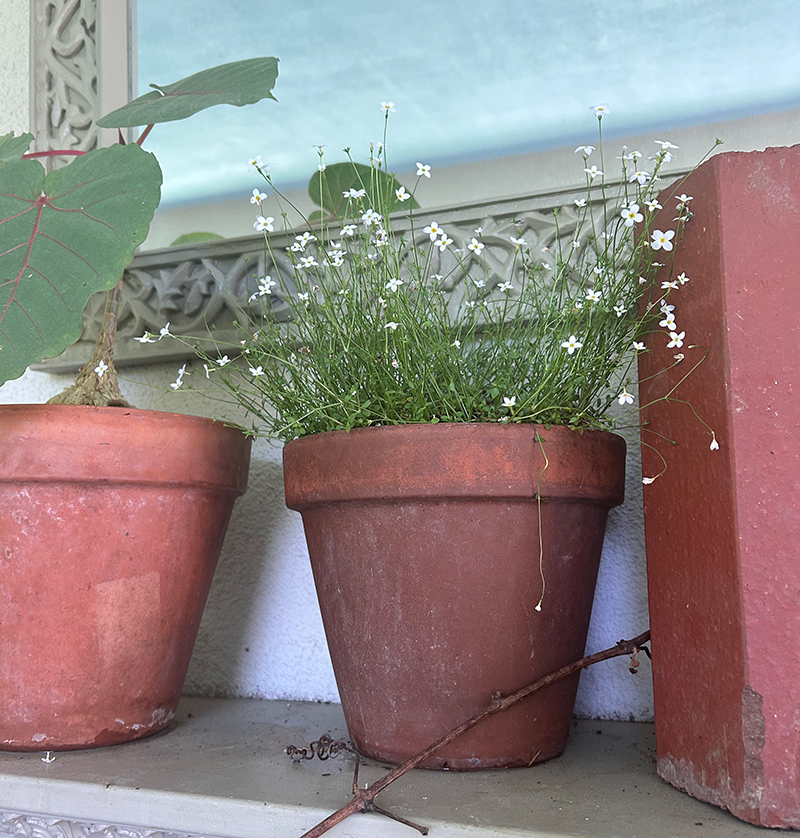
Tim has also re-homed many drought-tolerant plants from the Pennsylvania Horticultural Society Flower Show in March, including bright pink manuka (Leptospermum scoparium ‘Ruby Glow’). “Being a good environmental steward means being more waterwise,” he says. I’d seen those plants in the sterile convention center, wondering if they were doomed to the compost heap, and here they are thriving, their blooms bursting open like tiny pink fireworks.
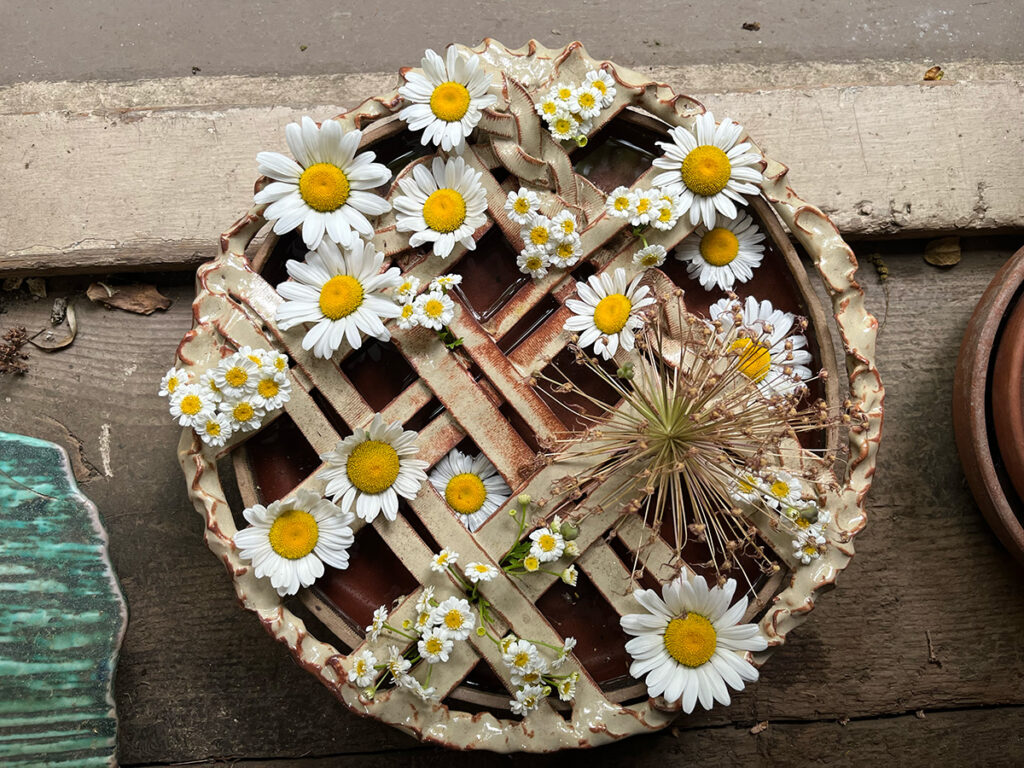
In addition to being a horticulturist at Chanticleer, Tim also makes pottery. This ceramic pie plate is one of his creations. Photo courtesy of Tim Erdmann.
“Gardening is about finding joy,” Tim says. “Wear weirdness on your sleeve.” I hadn’t realized how ecology, sustainability, and art could be so intertwined. Sustainability has long been a focus at Chanticleer, and the garden continues to increase its environmental efforts in inventive ways. It made me want to take more risks in my home garden, to reclaim lost treasures in my basement, and of course to plant Quaker ladies in containers everywhere. Two little boys came by barefoot and rocked in the handmade chairs on the porch, staring at the pipe pots, whooping with joy and then rolling down the hill. Birds flew high and bees buzzed, and all of my worries floated off me in this ecological paradise.
Tim’s design on the front porch highlights artistic shapes and structures, including dead hydrangeas and mid-ribs of a palm. “Start participating in your landscape and you’ll start caring about green spaces,” Tim says. Photo by Margo Rabb.
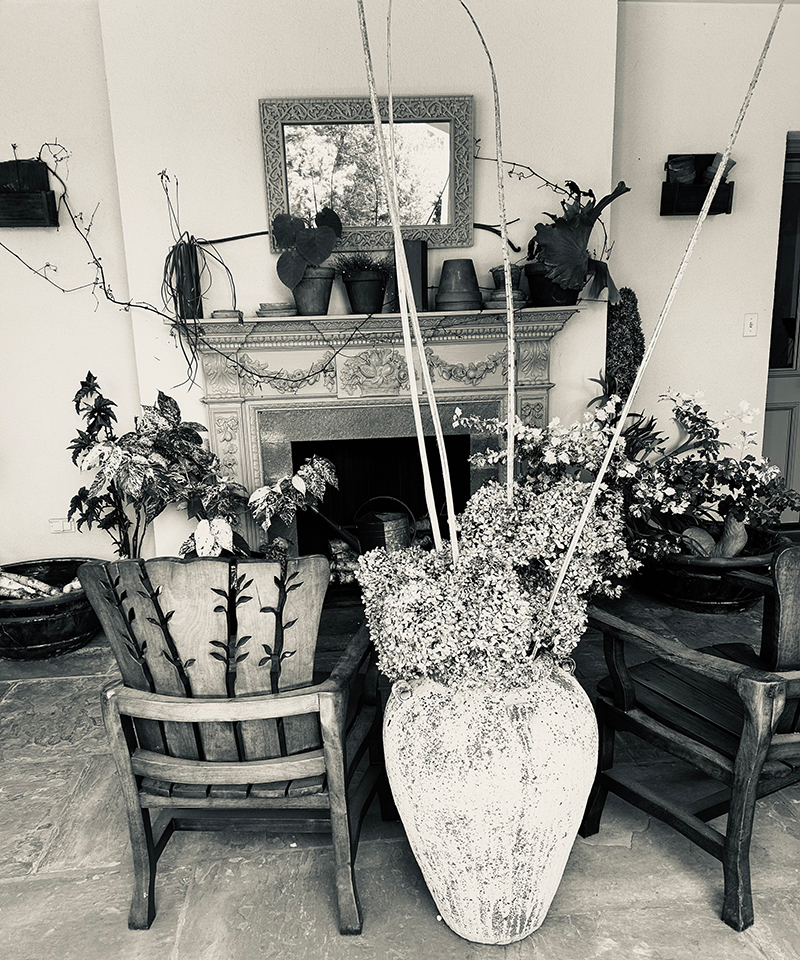
Margo Rabb is the author of the novels Lucy Clark Will Not Apologize, Kissing in America, and Cures for Heartbreak. Her essays and stories have been published in The New York Times, The Washington Post, The Atlantic, and Smithsonian. Visit her at margorabb.com.
Read about how Chanticleer is turning garden debris into beautiful, sculptural habitat piles.
